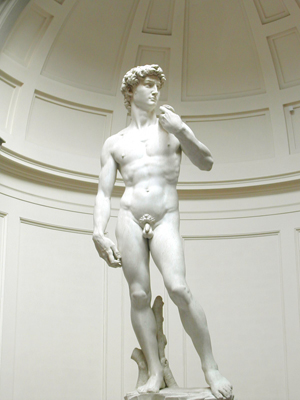
ROME (AFP) – More than 250 minor tremors have rattled the Florence region in recent days, sparking alarm in Italy over the safety of Michelangelo’s David statue.
According to the National Institute of Geophysics and Volcanology, the two strongest shocks in the Chianti region between Florence and Siena Friday measured 3.8. and 4.1 on the Richter scale, though many others recorded early Saturday reached three to 3.5.
No one was hurt in the quakes, and firefighters reported only minor structural damage near the epicenter about 30 kilometres (18.6 miles) south of Florence.
Still, media reports said some 200 residents of the area preferred sleeping in campers, cars or tents in neighboring areas Friday night rather than shaking at home.
The multitude of shocks has raised concerns for Florence’s invaluable architectural and cultural patrimony.
On Saturday, Italian Culture Minister Dario Franceschini announced the state is investing 200,000 euros ($245,000) for an anti-seismic plinth for Michelangelo’s David, a tourist magnet in Florence.
Last spring a study revealed that the renaissance masterpiece – which was sculpted from a 5-ton marble bloc that was already fissured – was at risk of collapsing if “micro-fractures” within the legs expanded.
A platform to protect the statue from vibrations was ordered to address the problem but the recent quakes “make this project even more urgent,” Franceschini said in a statement.
“A masterpiece like David must not be left to any risk,” he said.
Angelo Tartuferi, director of Florence’s Accademia Gallery that houses the statue, told Italian news agency ANSA that with the financing provided, the platform should be ready for use within the year.
The last major earthquake in Italy was a 6.3-magnitude jolt that killed 309 people in the central town of L’Aquila in April 2009, and was preceded by several weeks of minor tremors.
The biggest seismic event in recent history in the Florence region dates back to 1895, when a quake with an estimated magnitude of 5.4 provoked considerable damage in the hills to the north of the city.


